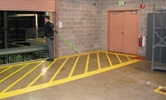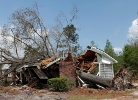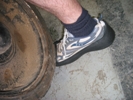
July 2011
- HEAD & FACE PROTECTION: After the Tornadoes
- FALL PROTECTION: The Most Overlooked Aspect of Fall Protection
- FOOT PROTECTION: Steel-Toed Assist
- HAZMAT: What Is Hazardous?
- OIL & GAS TRAINING: Implementing HES&S Training: A Brief Overview
- RUGGED COMPUTING: Rugged's Mass Appeal
- TRANSPORTATION SAFETY: Time to Upshift on Driver Wellness Programs
- TRANSPORTATION SAFETY: Sleep Apnea: Causes and Solutions
- OSHA AT 40 SECTION: The Push for a 'Paradigm Shift'
- OSHA AT 40 SECTION: How the States See It
- OSHA AT 40 SECTION: Q&A: The Future of the Profession
- OSHA AT 40 SECTION: Partners in Prevention
- FACILITY MANAGEMENT: Fighting Fatigue From the Ground Up
- EMERGENCY RESPONSE: The Value of Precision Notification
- PREDICTIVE SAFETY: The Route to Better Data
Click here to subscribe.
Cover Story

By Jerry Laws, Cindy Horbrook
Is I2P2 the game changer that Dr. David Michaels hopes it will be? And what does the future hold for OSHA rulemaking, enforcement, and cooperative programs?
Features

By Scott Mirizzi, Nolan Miller, P.E., C.S.P.
Employers should understand that by choosing a fall arrest system, they are obligating themselves to develop a rescue plan and corresponding rescue training.
By Timothy Means
Next-generation ENS eases compliance with timely notification.
By D. C. Breeding
A material of relatively low hazard can present substantial risk, while a material with a high hazard might present no measurable risk in certain circumstances.
By John Mavros
Here's how to effectively use your technology to keep your people safe.

By JoAnne Boston
Anti-fatigue mats are an important part of the big picture when it comes to improving worker productivity and reducing costs.
By Marc Barrera
Safety's professional associations will play an increasingly important role in support of the Occupational Safety and Health Administration in the decades ahead.
By Laura Swift
OSHA can look to states for guidance in standards development and educational outreach.
By Ronnie Rittenberry
Where are the safety professionals of tomorrow coming from, and will they be needed?
By Anthony Henley, Angelo Pinheiro, Dave Daly
In general, most companies use a combination of classroom and e-learning delivery methods.

By Jerry Laws
These machines appeal to a growing number of industry sectors, and rugged hand-helds aren't far off, says Dell Brand Manager Joe Trickey.

By Linda J. Sherrard
The safety training you do today has a very long lifespan.

By Vanessa Mays
Revolutionary rubber safety overshoes. Try saying that fast three times.
By Jonathan A. Jacobi
Managers, here are five reasons not to wait for DOT to tell you what to do.
Departments
By Robert Pater
The best "accountability" is arrived at and embraced within, rather than pushed upon leaders from without.
By Jerry Laws
Being unable to afford it is the most common reason for not taking needed leave.